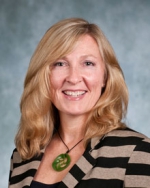I love this show and the relationships, friendships, sense of camaraderie and the challenges (personal and professional) that they face! As a certified nurse midwife (CNM) in 2013, I am struck by the similarity of issues. Yes, the era and clothing have changed (although some of the clothing is still current!), but many of the professional issues and themes faced by the 1950s East End Nonnatus House nurses/ midwives continue to flow though our current fabric of nurse midwifery. The trust/ distrust of the medical community, beliefs of what will be helpful for one’s health and wellness, and the challenges of inter-professional relationships are issues that everyone within the health system still deals with. The storyline of Meg and Mave Carter had multiple layers of these elements, and it was poignant when Sister Julienne said, “Where there is anger there is always fear.“
Cynthia was able to make a connection with Mave and that fostered the beginning of a bridge that would lead to receiving professional health care. We can often be confronted with barriers from the women themselves to their family members, friends or other people of importance. When Mave’s sister, Meg, states it is the “scourge of the bladder” and she only needs some marshmallow herb for treatment, our first reaction is that she is not educated or not familiar with modern treatments. It is interesting because marshmallow (Althaea officinalis L.) actually does have antibacterial and anti-inflammatory properties — and was used for (among other things) urinary complaints. However, our instant reaction is usually to win them over to our ‘modern’ or current treatment regimens rather than finding out what their belief is, why they want to use that, or if it is safe for them to continue. Mave needed to go to the clinic and to be examined, and she needed to be evaluated for any potential risks. We are lucky that we have more technology today, which can be used appropriately when needed.
The confrontation when Trixie and Sister Bernadette arrived at the birth was also very interesting. Mave was in the birthing chair, and Trixie stated, “We are in the 1950s not the 15th century.” Mave did need to lie down to be examined, but at that point it was unclear that there were twins, that the position of the second twin was not head down, and that she would experience a postpartum hemorrhage. For low-risk women we do use birthing chairs or help women to be more in a more upright position for their births! So some things that were used in the past are being used again.
I was struck by the expertise of Sister Bernadette as she successfully did an external cephalic version — turned the baby from transverse, or sideways, to the head down position. There was true camaraderie and respect between the physician and this nun. He is present — but only assists when needed. This same respect, open communication and the desire to be a team were missing for poor Jenny when she was in the hospital setting. It emphasizes the need for those elements for better outcomes for patients and even for job satisfaction!
It was beautiful when Mave and Meg were reunited during the birth of the second twin — it calmed her and decreased her stress and increased her ability and strength. Jenny’s comments or reflection at the conclusion of the show are powerful, reminding me how I feel honored to be a CNM and to assist women and their families through this amazing birth process. I agree with Jenny: They step into the future, they are stronger than before, woven anew, and that their joy is increased.
Some things that this show reinforced for me as a clinician and that I will emphasize with my graduate students are:
I really enjoyed this episode, and I found it made me think! There are some really interesting resources below from the National Center for Complementary and Alternative Medicine (NCCAM) website (Time to Talk campaign) and websites we have explored in our University of Michigan Nurse Midwifery clinical conferences about culture and diversity.
RESOURCES
Using Dietary Supplements Wisely
What You Need to Know (Dietary Supplements)
 Katie Moriarty (CNM, PhD, CAFCI) is a Clinical Assistant Professor and Associate Director of the Nurse Midwifery education program at the University of Michigan. She has been a nurse-midwife since 1992. Her undergraduate degree is from the University of Windsor, and her Master’s and PhD degrees are from the University of Illinois at Chicago.
Katie Moriarty (CNM, PhD, CAFCI) is a Clinical Assistant Professor and Associate Director of the Nurse Midwifery education program at the University of Michigan. She has been a nurse-midwife since 1992. Her undergraduate degree is from the University of Windsor, and her Master’s and PhD degrees are from the University of Illinois at Chicago.
Read More About Katie | Read All Posts by Katie